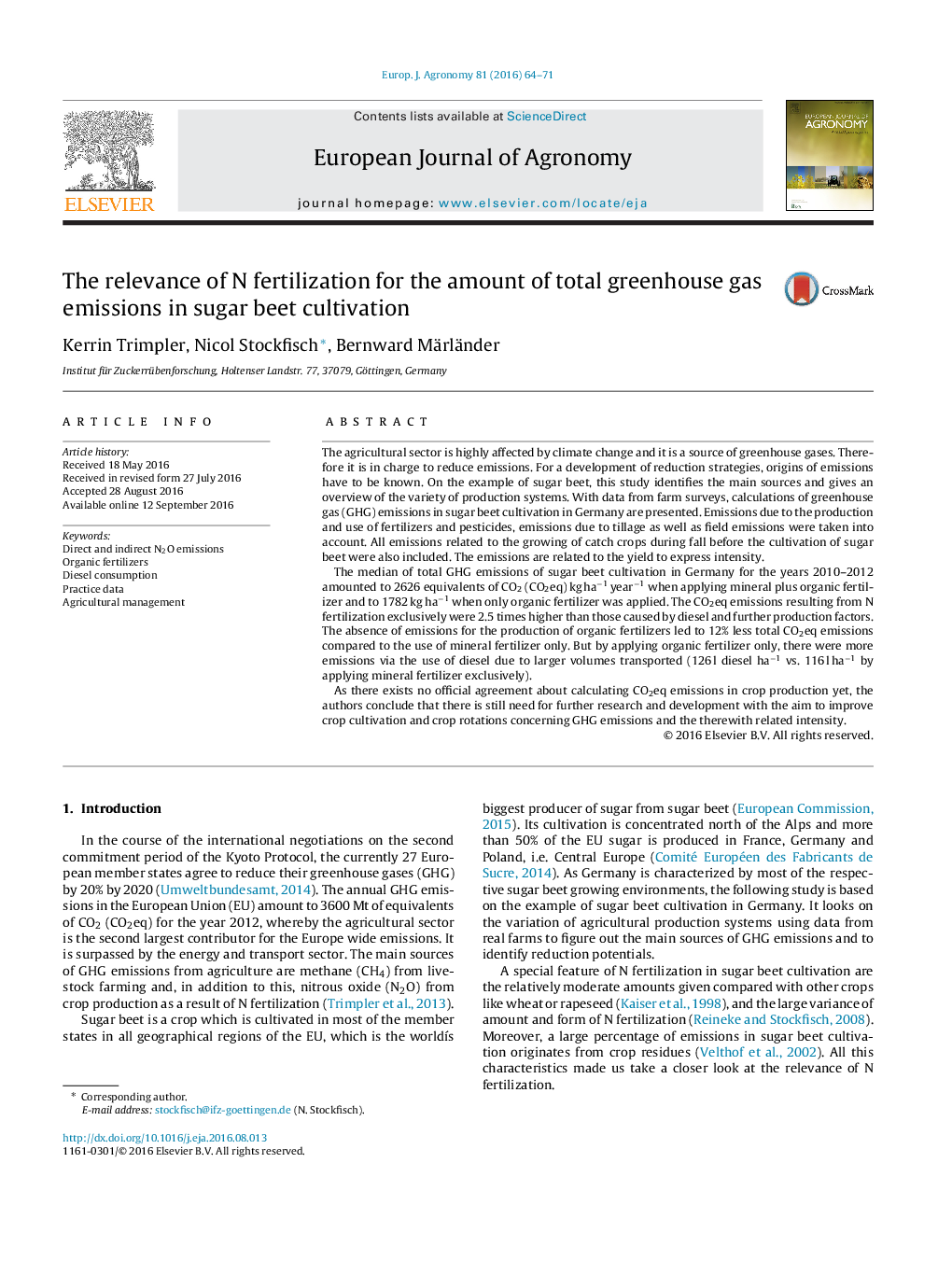| Article ID | Journal | Published Year | Pages | File Type |
|---|---|---|---|---|
| 4508656 | European Journal of Agronomy | 2016 | 8 Pages |
•Calculation of CO2eq emissions in sugar beet cultivation using the tool Biograce.•Practice data from 1181 farms were used.•N fertilization is the main source of CO2eq emissions in sugar beet cultivation.•On average, less N2O emissions were produced by using organic fertilizers only.•Sugar yield is independent of the intensity of N fertilization.•CO2eq emissions per t sugar yield between the years were mainly based on differences in yield and not on differences in management.
The agricultural sector is highly affected by climate change and it is a source of greenhouse gases. Therefore it is in charge to reduce emissions. For a development of reduction strategies, origins of emissions have to be known. On the example of sugar beet, this study identifies the main sources and gives an overview of the variety of production systems. With data from farm surveys, calculations of greenhouse gas (GHG) emissions in sugar beet cultivation in Germany are presented. Emissions due to the production and use of fertilizers and pesticides, emissions due to tillage as well as field emissions were taken into account. All emissions related to the growing of catch crops during fall before the cultivation of sugar beet were also included. The emissions are related to the yield to express intensity.The median of total GHG emissions of sugar beet cultivation in Germany for the years 2010–2012 amounted to 2626 equivalents of CO2 (CO2eq) kg ha−1 year−1 when applying mineral plus organic fertilizer and to 1782 kg ha−1 when only organic fertilizer was applied. The CO2eq emissions resulting from N fertilization exclusively were 2.5 times higher than those caused by diesel and further production factors. The absence of emissions for the production of organic fertilizers led to 12% less total CO2eq emissions compared to the use of mineral fertilizer only. But by applying organic fertilizer only, there were more emissions via the use of diesel due to larger volumes transported (126 l diesel ha−1 vs. 116 l ha−1 by applying mineral fertilizer exclusively).As there exists no official agreement about calculating CO2eq emissions in crop production yet, the authors conclude that there is still need for further research and development with the aim to improve crop cultivation and crop rotations concerning GHG emissions and the therewith related intensity.
Graphical abstract(a) Sugar yield (SY) per ha and (b) kg CO2eq emissions per t sugar for sugar beet cultivation, farm survey Germany 2010–12 (n = 1181), solid line = median, dotted line = mean, p ≤ 0.05, Kruskal Wallis Analysis.Figure optionsDownload full-size imageDownload as PowerPoint slide
